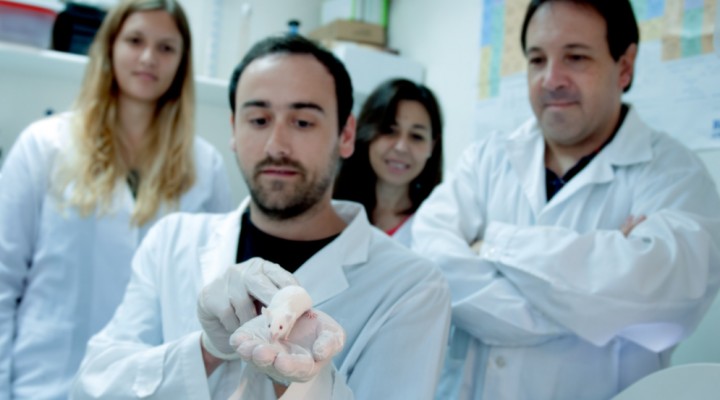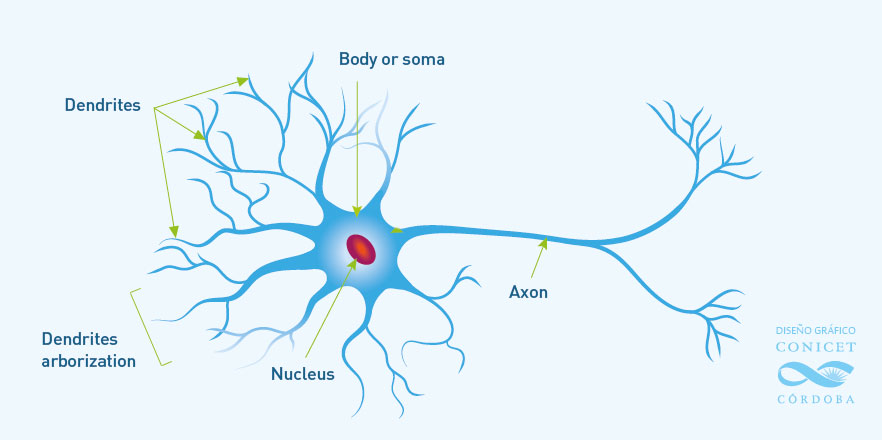BIOLOGICAL AND HEALTH SCIENCES
In the foliage of the neuron
One study identifies the protein that regulates the development and distribution of hippocampal dendrite, one of the brain regions linked to learning and memory.
The most frequent representation of neurons is the cell body with long projection –the axon – and small and abundant branching – dendrites- in the body, also called soma.
If the dendrites were compared with a tree, they would be like the branches of the crown, abundant and with different branching degrees. They are one of the structures of the neuron that is involved in synapse, the connection between two of these cells, and are one of the structures that are used to transmit information between neurons.
For the first time, CONICET researchers described the role of Lrig1 protein in the regulation of the dendrite arborization, i.e. in the development of its branching and distribution. They studied hippocampal phenomenon, one of the brain structures involved in the learning and memory processes.
“The arborization size and branching [of the dendrites] are going to determine the information process and the type of function this neuron is going to have”, Gustavo Paratcha, CONICET independent researcher at the Institute of Cell Biology and Neuroscience ‘Professor Eduardo de Robertis’ (IBCN, CONICET-UBA), comments.
The study published in Embo Reports proved that this protein modulates primary dendrites formation that if they were compared with a tree, they would be the thickest branches, near the trunk – in this case the soma -. Apart from that, this protein promotes its branching.
Figures between levels and their consequences
When animals cannot produce Lrig1, the growth and structure of the dendrites increase without control, as a leafy tree. “This leads to non specific or anomalous information transmission between neurons. The neuron cannot process all the information that comes from that big dendrite arborization because it is too much”, Ledda says.
This can be compared to a leafy tree, where each of the leaves of the branches can receive information. If there are many of them, it is too much for the tree to process them. If the amount is small, it is not enough. Lrig1 role is to regulate the levels and arborization degrees so as to maintain them with minimum and maximum figures.
Ledda and Paratcha state that when there is lack or excess of arborization, there can be disorders in the information process in the neuronal circuits, which can lead to the development of pathologies, and sometimes with cognitive deficits.
“During this research we realized that one of the fields that is affected is social interaction, an interesting aspect because it is one of the characteristics that occur in the autism spectrum disorder, which is very broad”, Ledda comments. This condition is characterized by individuals’ lack of social interaction.
The study was focused on hippocampal neurons and bark. “We wanted to know which molecules are involved in the proper functioning because they can provide some clues to understand the processes that affect memory, social interaction and learning”, Fernanda Ledda comments.
The authors describe that Lrig1 modulates the activity of the Brain-Derived Neurotrophic Factor (BDNF), a protein involved in the development of the nervous system. Lrig1 reduces BDNF signaling, i.e. it lowers the response of the cells to their activity, and the study shows that it limits dendrite arborization induced by BDNF. Without Lrig1 control, the dendrites grow and branch excessively.
This study also reveals for the first time the role of Lrig1 in a central nervous system process, where it regulates the neuronal connectivity by affecting the morphogenic processes, such as the dendritogenesis.
“Understanding the processes that control the development of the nervous system is important to develop efficient therapies. Without the basic knowledge of how the biological processes take place and they are regulated, it would not be possible to try to find regenerative therapies”, Paratcha concludes.
About the study:
– Fernando Cruz Alsina. Post-doctoral fellow. IBCN.
– Francisco Javier Hita. IBCN.
– Paula Aldana Fontanet.Post-doctoral fellow . IBCN.
– Dolores Irala. Post-doctoral fellow. IBCN.
– Håkan Hedman. Umeå University. Switzerland.
– Fernanda Ledda. Independent researcher. IBCN.
– Gustavo Paratcha. Independent researcher. IBCN.
By Ana Belluscio.

